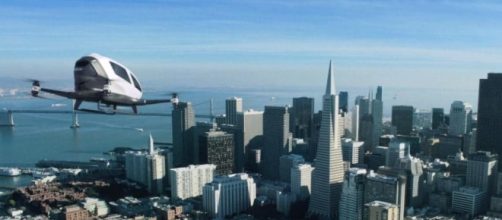Imagine a future where the sky is filled with flying cars? It would either be spectacular, or a disaster waiting to happen. We can’t say for sure, but a company known as Lilium is gearing up to bring the world of science fiction to life.
The craft in question is called Vtol, and it’ an all-electric vehicle that consumers can summon with an app. This thing is aiming to become the Uber of the skies, and with a recent $90 million in investment from Chinese company Tencent and others, the flying car dream is closer than you think.
Lilium intends to use the money to expand its workforce in a bid to take the electric flying car to the next stage.
That doesn’t mean the first electric flying car will take flight very soon; it only makes the inevitable that much closer to happening.
How does VTOL differ from competing concepts?
There are several companies out there working hard on their own take on the flying car. One of the most notable is Ehang, a company that is hard at work on massive drone known as the 184. This device is designed to transport humans from one area to the next without the need for a pilot in the cockpit.
Now then, the big difference with the 184 and VTOL is the way these flying cars take to the sky. VTOL takes advantage of flaps with electric jets that are designed to rotate in an unusual position. Apparently., the flaps spin from vertical to horizontal.
Here’s the thing, when the flaps rotate vertically, the car takes off like a helicopter. However, when it switches to a horizontal rotation, it flies like a regular airplane. The report claims this decision makes for a flying car that can move faster and more efficiently. For those unaware, the flight pattern is similar to the V-22 Osprey.
As for the Ehang 184, it uses several rotors to lift and stay afloat, which is a tried and true way of doing things.
Look who’s backing Lilium
As it stands at the time of writing, the European Space Agency (ESA) is heavily supporting Lilium, which is kind of interesting since a Chinese company is one of the sponsors. Recently, the company hired engineers from Airbus, Gett, and Tesla to help push VTOL into the big league.
Some folks might be wondering about Gett, well, it’s a ride-sharing competitor to Uber and Lyft, though it’s too small to make an impact in that market.
The grand idea is to have the VTOL fly at speeds up to 186 mph. Not to mention, it should be able to do this while carrying passengers 186 miles around the world. The first test will take place in 2019, while first passenger flight is set for 2025.


